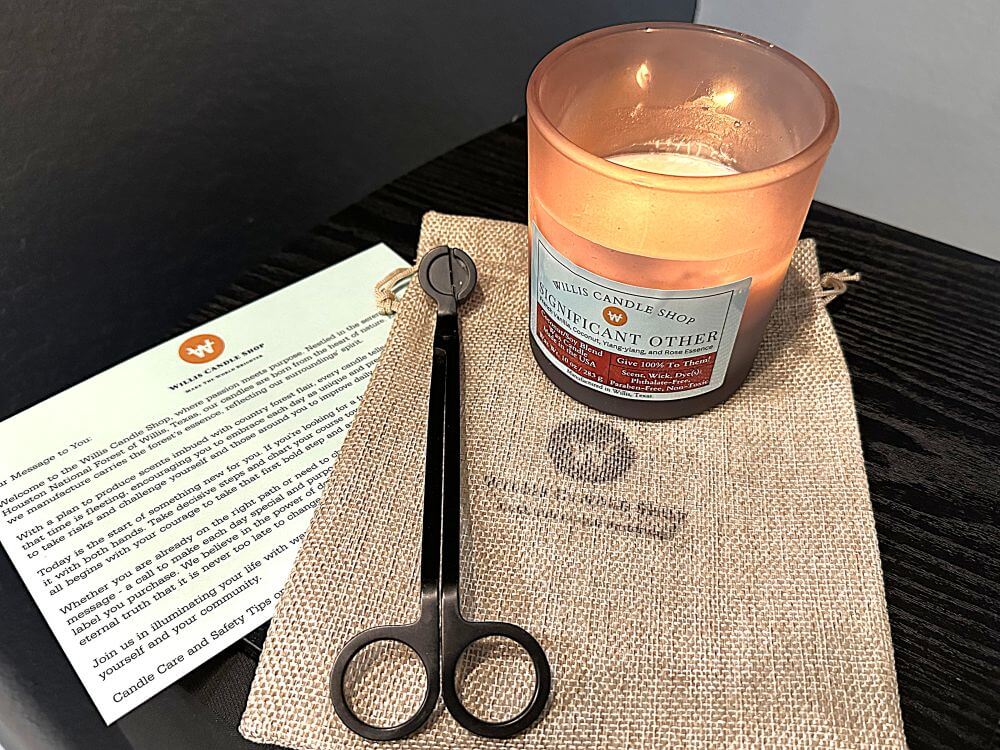
NASA Candle Test: Lessons for Wood Wick Candles | Part 1
NASA Candle Test: Space Science at Home
Most people light a candle and never think twice about what the flame is really doing—but NASA sure did. When astronauts started taking ordinary candles on missions, scientists discovered that fire in space works nothing like fire on Earth. In this series, we’ll reveal how NASA’s space research changed what we know about candle safety, clean burning, and why wood wick candles and other modern designs burn the way they do.
NASA’s Candle Flame Experiments in Space
In the 1990s and beyond, NASA ran combustion experiments using paraffin and soy coconut candles on the Space Shuttle and space stations. Why? Fire safety in space is critical—one runaway flame in a sealed capsule could spell disaster. NASA needed to know how flames behave without gravity, so they observed how ordinary candles made in USA performed in zero gravity. They measured flame size, color, oxygen use, and soot output. These studies set the stage for a new era of clean candles and safety science.

How Candles Burn in Microgravity
On Earth, flames rise and flicker because hot air goes up while cooler air sinks. In microgravity, there’s no “up”—so the flame forms a perfect sphere, glowing blue and burning cooler. This round flame uses oxygen more evenly and creates almost no soot. The even heat means long lasting candles can melt their wax consistently, which is why NASA’s research now influences every frosted glass candle and container design that focuses on burn quality.
What NASA Discovered About Combustion
NASA’s flame studies found that microgravity flames burned more completely, producing fewer pollutants. On Earth, incomplete combustion can make candles smoky, especially those with heavy fragrance oils or cheap wax. But in space, the candle’s flame gets oxygen from all sides. This led to insights for phthalate free candles, sustainable candles, and eco candles—all trends that define modern home fragrance.
The Impact on Wood Wick Candles and Modern Candle Science
Even though NASA didn’t specifically test wood wick candles, their data applies to all wicks—cotton, wood, or blends. At Willis Candle Shop, our wood wick candle options use wide, flat wicks to mimic the slow, clean, and even burn NASA documented in space. The uniform oxygen flow around a wood wick means fewer “dead spots” and a stronger scent throw. These scientific principles also benefit our luxury candle brands and unique jar designs.
Cleaner Burning for Healthier Homes
NASA’s research gave candle makers the science to produce toxic free candles, lead free candles, and natural soy candles. A focus on air quality led to floral candles and bakery candles that throw fragrance without filling your house with soot. It also helped inform the popularity of vanilla bean candles, amber candles, and chocolate candles—all made with safer ingredients. For example, our bakery candles (like Mocha Masquerade) use the lessons of even melting for a strong but clean aroma.
Wood Wick Candle Advantages: What NASA’s Data Revealed
A key benefit of wood wick candles is their ability to create a broader, more stable flame. This is similar to what NASA’s research discovered: a steady, round flame is more efficient. Our motivation with scented candles blog explains how a stable flame not only lasts longer, but also keeps your home cleaner.
Specialty Candle Types: Patchouli, Grapefruit, and More
NASA’s research helped clarify why certain fragrances perform better in large soy candles and unique jar candles. For instance, our patchouli candles (Coastal Wharf) and grapefruit candles (Citrus Storm) benefit from an even melt pool and enhanced scent diffusion—a principle rooted in zero gravity studies. The same goes for summer candles, pumpkin candles (future release), and vintage candle jars that blend science with design.
From Science Lab to Living Room: Real Safety Upgrades
It’s not just about fragrance. NASA’s findings transformed candle safety guidelines. New protocols for tealight candle holder decor, minimalist candles, and holiday candles stem from understanding flame stability. That’s why resources like mindful candle habits are so important in today’s home décor world.
Why “Made in USA” Candles Matter
NASA’s candle experiments were run with products made in America, reflecting strict safety and quality standards. Our own candles made in USA are designed for the same reliability. By applying NASA’s research, Willis Candle Shop creates clean candles that you can trust—no matter your style or scent preferences.
What About Beeswax and New Candle Ingredients?
While NASA’s classic experiments focused on soy and paraffin waxes, modern candle makers—including Willis Candle Shop—continue to innovate. In late summer 2025, we’ll add a small percentage of beeswax for smoother, longer burns, but we don’t sell pure beeswax candles. We’re committed to transparency, so you always know what’s in your candle and why it’s there.
Choosing the Right Candle for Your Space
NASA’s discoveries make it clear: if you want long lasting candles with clean flames and rich scents, choose brands that put science first. Whether it’s coconut vs soy waxes for the environmentally minded, bakery candles for sweet lovers, or autumn candles for seasonal fans, informed decisions lead to safer, more enjoyable burning experiences.
The Future of Candle Science
NASA continues to study fire and materials in microgravity, influencing innovations in everything from sustainable candles to wick design. As technology evolves, so do our standards for natural soy candles and eco candles.
Stay Safe: Burn Candles Mindfully
No matter what you light at home—wood wick, soy blend, or vintage jar—burning mindfully is essential. NASA’s science proves that fire is always a risk, especially in a closed environment. For more safety tips, check reliable resources and always follow proper candle safety protocols to avoid fire hazards while relaxing.
Conclusion: Zero Gravity, Real-World Results
The next time you burn a candle, remember: the science behind that tiny flame may have started in a NASA lab. Today, brands like Willis Candle Shop turn that knowledge into clean candles, wood wick candles, and more. Stay tuned for Part 2, where we explore the future of combustion, safety, and home fragrance!
Frequently Asked Questions
Did NASA really test wood wick candles in space?
No, NASA did not test wood wick candles specifically, but their flame experiments inform all modern candle design—including wood wicks.
How does a candle burn in zero gravity?
In zero gravity, a candle’s flame forms a sphere, burns cleaner, and uses oxygen more efficiently due to the lack of convection.
Can NASA’s research make candles safer at home?
Absolutely. NASA’s research has shaped safer candle materials, burn protocols, and inspired innovations for a cleaner burn at home.
The information presented in this blog post is for general educational and informational purposes only. While Willis Candle Shop aims to provide accurate and up-to-date details, the content may not reflect the latest changes in our products, policies, or practices. Nothing in this blog constitutes legal, medical, or professional advice.












